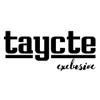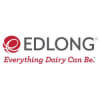Strolling down the aisle of a grocery store, consumers may not realize the amount of time and effort that has gone into planning the packaging for the food and beverage products lining the shelves.
“According to our research, shoppers spend on average 27 seconds making a decision in this aisle, which makes shelf appeal incredibly important in capturing relatively disengaged consumers,” Carla Fantoni, vice president of communications for Tetra Pak U.S. and Canada, told Food Dive. “Brands need to take the time to focus on package quality and design to create packaging that offers a bold, consumer-facing billboard on the shelf.”
Between design and functionality, premium packaging has the ability to influence whether consumers see a product as more valuable and worthy of a higher price — which may be crucial to manufacturers’ efforts to boost top-line performances.
How premium packaging creates value through functionality, convenience
Packaging has two primary purposes: to contain and protect the food or beverage and to catch a consumer’s eye on the shelf. But when manufacturers add functionality — particularly in the form of convenience — to their product packaging, that can inherently add value for the consumer. They may see the final product as “premium.”
“Consumers desire package designs that are more adapted to their needs than ever before,” said Fantoni. “Attributes like functionality, shape and graphic design have the ability to make a package appear premium in the eyes of the consumer.”
Value for consumers today can extend well beyond financial worth. Nowadays, it often comes from to the perception of the product's overall contribution to his or her life. Snacks, candy and gum producers have debuted various convenience-based packaging innovations that contribute to a "premium" perception, such as resealable pouches, mini packets and car cup holder-sized packages.

“Successful marketing now involves engaging customers and showing how products not only make life easier but also more meaningful,” said Fantoni. “That’s why packages with high functionality tend to be perceived as premium, so features like high performance openings and closures are sometime perceived as premium to consumers… As the pace of living grows more hectic and lines between work and leisure blur, consumers value products and services that simplify their schedules and provide convenience wherever possible.”
Other experts don't think convenience is always a major factor in whether consumers deem packaging — and the product contained within — premium.
“Convenience is a key benefit for any product and pack whether it is positioned as mainstream or premium,” Gil Horsky, global innovation platform lead at Mondelez International, told Food Dive. “Consumers expect products to simplify their lives. Hence, I don’t believe that convenience by itself is an attribute that is exclusively linked to premium offerings.”
The importance of premium packaging design
Functionality is one consideration, but premium packaging for many consumers still comes down to the packaging’s visual design.
“Consumers also want their on-the-go packages to fit their lifestyle and be visually appealing, thus this is another reason design is crucial,” said Fantoni.
“Design plays a major role in creating a premium image, probably the most major role, more than advertising, more than celebrity endorsement,” Steve Lamoureux, senior vice president of product innovation at Nielsen, told Food Dive.
Horsky outlined four primary cues associated with premium packaging:
- A distinctive or iconic pack shape/structure to cue brand personality and distinguish premium lines. (like Toblerone’s triangle pack and Absolut Vodka’s uniquely shaped bottle)
- Connecting on a sensorial level and appealing to multiple senses, such as touch, sound or smell. “Packages that can successfully stimulate most of the senses will be perceived as more premium,” Horsky said.
- Specialty finishes that link to the importance of tactile feel.
- The power of simplicity to cue sophistication and elegance, which “in essence means ‘less is more’ with premium packaging,” Horsky said.

Besides common traits of premium packaging, some products’ packages are seen as premium simply by standing out from everything else in that category.
“If the norm of the category then defines the commonality of the category, (and) the more of those norms you follow, the less likely you're going to be premium,” said Lamoureux. “To stand out distinctly as being premium, you need to break some of those norms.”
How premium packaging impacts pricing
Because manufacturers can use premium packaging as part of a product’s positioning, packaging choices can also impact price beyond the cost of packaging production.
“Premium packaging is used as a key component of product positioning as it often helps the product deliver value for consumers,” said Fantoni. “But it’s also important to keep in mind that premium packaging used in non-premium products won’t deliver anything.”
Depending on the social or financial value packaging can deliver, manufacturers may be able to raise prices on the same product by using packaging seen as premium — and consumers will pay a premium for it.
“According to Deloitte’s 2015 American Pantry Study, today’s consumers are willing to pay more for products with the right attributes, including innovations and improvements, customization and convenience,” said Fantoni. “It’s easier to stand out from the crowd if consumers can plainly see these functional improvements.”
"Today’s consumers are willing to pay more for products with the right attributes, including innovations and improvements, customization and convenience."

Carla Fantoni
Vice president of communications, Tetra Pak U.S. and Canada
“Premium packaging, if executed and positioned correctly should enable (manufacturers) to command a higher price point and deliver incremental sales for the brand,” said Horsky. “As part of the process of premium-izing a brand and its packaging, a key strategic aspect to define upfront is the frame of reference the brand wants to play in. This can be very different to where the brand is positioned today and the decision will impact the overall packaging brief.”
With the use of premium packaging already on the rise, experts predict that more manufacturers will adopt this strategy as they work to improve their top lines.
“Global consumer branded products are facing headwinds in developed markets with rising commodity costs and retail chains becoming more and more focused on private label,” said Horsky. “While in developing markets, rising disposable income is accelerating the emergence of the middle class who are expecting their trusted brands to deliver more special experiences. These macro-trends serve as a catalyst for mainstream global brands to premium-ize their portfolio, and I only project this trend to intensify in the coming years.”




















